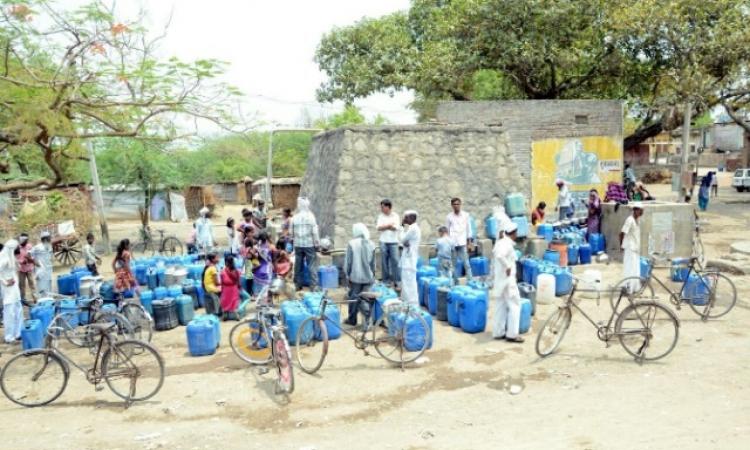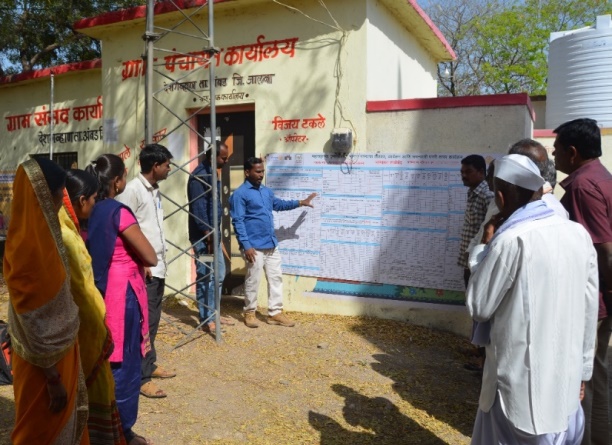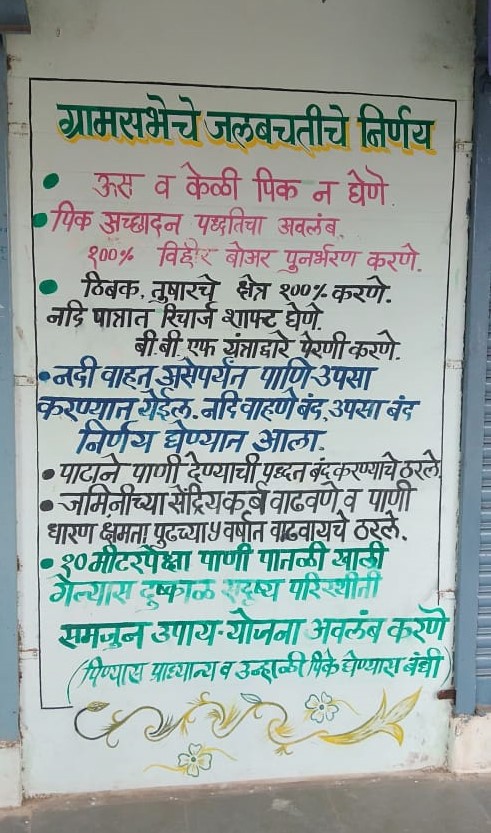
Water, belongs to everyone, managed by no one
While watching a film on WOTR’s Water Stewardship efforts, “Paani Kaarbhari – Water Stewards”, that won the Ministry of Jal Shakti's ‘Water Heroes: Share Your Stories’ contest1, we came across the wise words of a village woman who says “Water does not belong to one person, it belongs to everyone”.
And yet, the scarcity of water coupled with its inequitable distribution is a very real threat that looms large on us. The commodification of water has attached a premium to it, and there is a strong push for water pricing and water markets. Does this mean that water will be available to and controlled by a privileged few?
Along with such water privatisation and commodification issues, the overall water sector is facing many challenges varying from water scarcity to quality issues, and severe depletion of groundwater resources due to expanding and intensive irrigation and industrial needs. However, the overall poor institutional governance at the village and micro watershed level is the root cause of this.
To address these key challenges, huge efforts are being put for years by different stakeholders such as donors, NGOs, government departments, and social entrepreneurs. Unfortunately, the present growing water scarcity and depletion show that these efforts are not sufficient. While many villages have received success at different levels in achieving water security and building management skills, they are not finding clear incentives for continuing these good efforts towards sustainability.
On the other side, there are a huge array of investors such as government departments, NGOs/donors, and CSRs who are passionate to invest and contribute to making these communities water secure/neutral, but are not able to take the wise decision to invest in villages to receive the optimum outcome of their investment.
Realising these challenges, Watershed Organisation Trust, with a lot of deliberations, has designed and come up with the ‘Water governance standard and certification system tool.’
What is the Water Governance standard and Certification System?
Water governance standard is a set of predefined criteria that puts forward good governance practices, relevant for local water governance in agrarian communities. The standard assesses the level of village communities to govern the water supply and demand-side management, institutional governance, and equity and sustainability issues.The certification system further assures the adherence of communities to the standard.
We can see that the standards and certification system has proved its effectiveness in different sectors like credit, power sector, education, etc. Several sustainability standards also exist internationally that are related to different aspects of water management. There are ISO standards for environmental considerations and water footprint, alliance for water stewardship and European water partnership for water stewardship standards, and several other sustainability standards addressing the field-level sustainability requirements.
Even though they have different primary objectives, almost all these standards aim towards improving site specific water governance. These international standards are based on the basic theme of environmental and ecological concerns. Importantly, the entities who adopt the existing international standards include big corporate groups, farmer groups who are the suppliers of retail chains, companies in the food processing industry, and different business units.
But will these existing standards be effective in a rural agrarian setup? The rural sector faces a lot of challenges in groundwater governance and sustainability of development programs. There is no system for certification currently available that can incentivise the rural communities and appreciate the good work they are doing as well as motivate them for doing better. Therefore, to encourage agrarian communities to adopt sustainable water governance practices at the local level there is a need for a separate standard and certification system for Water Governance. WOTR’s water governance standard tool has been invented in this background to address these challenges.
The approach of WOTR’s Water Governance Standard and Certification System
WOTR’s standard is developed to address the basic life, livelihoods, and water requirements of the agrarian communities. As presented in the figure below, its target audience is the village community as a whole, including a large number of smallholder farmers. The tool is developed to build the bridge between agrarian communities and the resource agencies to make the informed decisions by both in where resource agencies can make an informed choice to invest, ensuring the return in terms of a better outcome.

Thus, the standard and certification system acknowledge and appreciate the agrarian communities for their governance efforts and provides certifications (in terms of Bronze, Silver, Gold, and Platinum) and also present the course of actions and corrective measures to improve the level of governance to those communities who receive less score.

Value Framework for Water Governance Standard
The WOTR’s Water Governance Standard is based on the foundation of certain normative concerns (values and principles). This normative framework is presented in the following figure:

- Water availability, access, and quality – Access and adequate availability of good quality water for humans, livestock, and ecosystems is a basic necessity and at the core of the WOTR’s water governance standard. It aims to make water accessible to the complete ecosystem.
- Institutions and Capacity building – Continuous capacity building of people or resource users is important to achieving the goals of water availability and access. Participatory water governance is the key to achieve it. The formation of village-level rules regarding water use and crop practices and their adoption by villagers is crucial in this aspect.
- Water Budget and Local Hydrogeology – Local meteorological and hydrological data is a must to accurately calculate the water budgets and planning supply and demand-side water interventions.
- Most efficient water use and water-saving practices – Optimum use of each drop of water through the use of micro-irrigation, undertaking soil health measures, etc to adopt water-saving practices are crucial in efficient water conservation and management of water resource.
- Equity in water access and participation – Equitable distribution and access to water is the key concern of WOTR’s water governance standard. It endeavors to make water available to the most vulnerable communities and components of the ecosystem. Inclusive and powerful water institutions are a must to achieve this.
- Environment and Ecosystem sustainability – Water is life and the basis for the flourishing of the entire ecosystem. WOTR’s water governance standard adequately reflects environmental concerns and ecosystem sustainability.
The value framework of WOTR’s Water governance standard and certification system incentivises the agrarian communities to adopt sustainable water governance practices. Its ultimate aim is to capacitate the rural community to manage their water resources sustainably, equitably, and in a participative manner for assured drinking water and enhanced livelihood opportunities, putting environmental and ecosystems concerns at the center.

To summarise, WOTR’s water governance standard and certification system, based on the village community's level of water governance, provide the certification to the village. The village may utilise this certificate to bring the investment into the village as well as investors may also make an informed decision to invest in the village where they can ensure better and assured outcomes towards judicious, efficient, and sustainable water use.
Thus, the water governance standard and certification system tool immensely contributes to few important targets of the UN SDG, such as goal number 6, 12, and 16, and similarly, the tool is also in line with the Composite Water Management Index developed by the NITI Aayog and National Water policy in India.
1. “Paani Kaarbhari – Water Stewards”, film is available at, https://www.youtube.com/watch?v=T0qsUTEl-K0